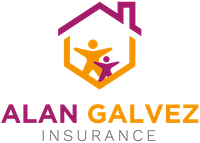Unfortunately, we’ve seen this happen more often than we’d like. And if you’re the driver who’s been hit, it really stinks. This post will briefly describe the requirements to be able to drive in the State of Ohio (also called the Ohio Financial Responsibility law), how your own policy can come to the rescue and how money can be recovered (if possible) from the at fault driver.
Ohio’s Financial Responsibility Law
You cannot drive legally in Ohio without being able to demonstrate your financial responsibility (FR). To do this, you must have the minimum requirements of liability coverage in case you are responsible for a traffic accident. The minimum requirements are $25,000 per person/$50,000 per accident for bodily injury to others and $25,000 for property damage to others.
If you own a vehicle, then you purchase an auto insurance policy. If you don’t own a vehicle, then you buy a Named Nonowner (also called Named Operator) policy. Both options provide bodily injury and property damage coverage equal or greater to the above limits (you can choose the limits you want) and satisfy the financial responsibility law.
Failure to have proof of financial responsibility can result in severe penalties, including:
- Suspension of driver license from 90 days to one year, depending on whether first time or repeat offense.
- Impoundment of license plates and registration
- No driving privileges during suspension
So, yes, even though Ohio has a law, there are still drivers that fail to comply. And occasionally these drivers are involved in accidents. Let’s walk through an example.
The accident
All motor vehicle accidents share basic similarities- 2 or more vehicles involved, with one being the at fault party for the accident. Your vehicle is damaged and you suffer injuries. During the investigation, it is discovered that the at fault driver does not have insurance (in this case the driver and owner of the vehicle are the same, and it is the owner’s responsibility to insure the vehicle). What do you do? Your first option is to use your own policy to pay for your damages and injuries.
Using your car insurance policy to pay for your damages and injuries.
Let’s just say it now and get it out of the way- it absolutely stinks to have to use YOUR policy to pay for damages and injuries when YOU were not responsible. I get it- it’s NOT fair. However, knowing that this is a possibility should be a wakeup call that YOU need to have the best policy possible to protect YOU. You cannot count on others to have the coverage necessary to pay. You just can’t.
So let’s talk about the different parts of your car insurance that might be used here.
For your Bodily Injury:
- Uninsured/Underinsured Motorists Bodily Injury Liability (also called UM/UIM)- this coverage pays for your injuries if hit by an uninsured or underinsured driver. Underinsured means not having enough insurance to fully pay the claim. It pays up to the limit on your policy. Could this be pretty useful? Absolutely! But some people might ask- what about my health insurance? Most health insurance has a clause that requires any other valid and collectible insurance to pay first if an auto accident is the cause. So the UM would qualify here. And if you don’t have health insurance, then this coverage could be even more helpful.
- Medical Payments- I’ve always called Med Pay the hero of insurance. It’s a no fault coverage that pays medical bills for you and any passengers in your vehicle (up to the policy limit). It can be used immediately after an accident and since there is no need to prove fault, medical bills get paid quickly. It’s also a relatively inexpensive coverage considering what it provides.
For your Property Damage:
- Uninsured Motorists Property Damage (UMPD)- similar to the above, UMPD pays for property damage to your vehicle if an uninsured or underinsured driver hits it. Three levels of coverage are common: $7,500, $10,000 and $25,000, subject to a deductible of $250.
- Collision- if you don’t have UMPD, but do have collision, this is another option. It pays to fix your vehicle, subject to the deductible.
Keep in mind that for UM and UMPD to be paid, the driver and/or vehicle owner must be identified and proven to not have insurance or not enough to fully pay the bodily injury/damages. The insurance company will not just write a check without proof.
After the insurance company has paid the claim, they will attempt to subrogate against the responsible party to recover paid on your behalf.
A final option
Although not ideal, an option of last resort is filing a civil suit against the responsible party. You would seek this option if you don’t have the coverage mentioned above. Although you could potentially win the suit, the payback may be slow going depending on the resources the at fault party has to draw from (maybe few assets). A payment plan might have to be established or a wage garnishment from each paycheck taken.
Don’t let an uninsured driver ruin your life. In the event of a car accident, you want to make sure your car insurance is the best it can be. Call us at (937) 592-4871 or fill out the form below. We’re here to help!
